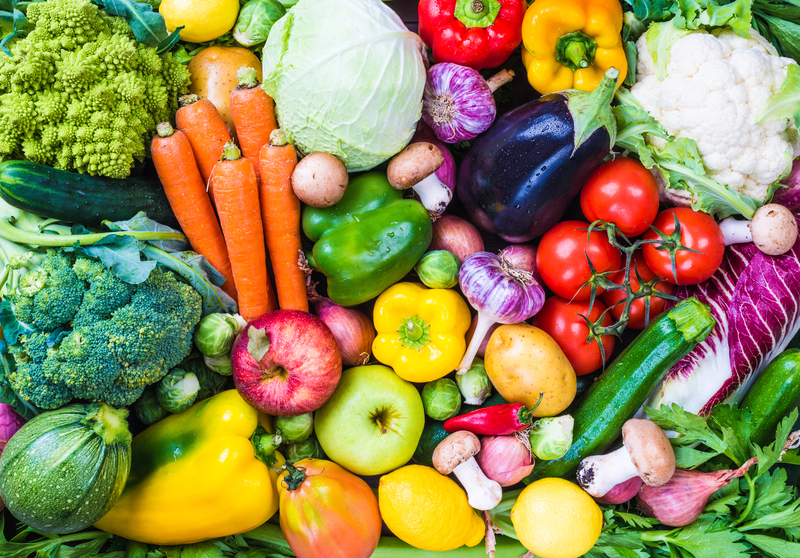Nurturing Your Herb Garden into a Green Sanctuary
Posted on 20/08/2025
Nurturing Your Herb Garden into a Green Sanctuary: A Comprehensive Guide
Growing your own herb garden can be a deeply rewarding experience. Not only does it provide a continuous supply of fresh, aromatic herbs to enhance meals, but it also creates a peaceful green retreat right in your backyard, balcony, or windowsill. Turning a spot in your home into a true herb sanctuary requires more than just planting seeds; it calls for a thoughtful blend of knowledge, care, and creativity.
In this extensive guide, we will explore every aspect of nurturing your herb garden into a vibrant green haven. Whether you're a seasoned gardener or just getting started, you'll find practical advice and inspiration to create a thriving, beautiful space filled with your favorite culinary and medicinal plants.

Why Create an Herb Garden Sanctuary?
- Healthier Culinary Options: Fresh herbs intensify flavor and increase nutrient intake in your dishes.
- Wellness Benefits: Many herbs, like lavender and mint, offer calming aromas and natural remedies.
- Biodiversity Support: Herb gardens attract pollinators such as bees and butterflies, enriching local ecosystems.
- Mental Wellbeing: Gardens promote relaxation, mindfulness, and a sense of accomplishment.
- Sustainable Living: Home-grown herbs reduce reliance on store-bought plastic-packaged seasonings and minimize waste.
Planning Your Herb Garden Sanctuary
Choosing the Perfect Location
Herbs thrive in areas that mimic their natural Mediterranean habitat--think well-draining soil and plenty of sunlight. Here's what to consider:
- Sunlight: Most herbs prefer at least six hours of direct sun daily. South-facing windowsills, patios, and garden beds are ideal.
- Accessibility: Place your herb garden close to your kitchen for quick harvesting and ongoing care.
- Protection: Ensure the space is shielded from strong winds and heavy rain for delicate herbs.
Deciding Which Herbs to Grow
Selecting your favorites while considering their unique needs will maximize success and satisfaction.
- Culinary Herbs: Basil, chives, parsley, mint, oregano, thyme, rosemary, and sage are classics that suit most cuisines.
- Aromatic & Tea Herbs: Try lemon balm, chamomile, or lavender for fragrant teas and relaxation.
- Medicinal Herbs: Echinacea, calendula, and comfrey support home herbal remedies.
Tip: Plan your sanctuary based on your space, climate, and personal preferences for the most rewarding herb gardening experience.
Soil Preparation: The Foundation of a Thriving Herb Sanctuary
Rich, well-drained soil is key to nurturing strong and healthy herbs. Here's how you can prepare garden beds or containers for optimal plant growth:
- Soil Mix: A sandy loam with added organic matter (like compost) achieves a good balance of drainage and nutrients.
- pH Level: Most herbs prefer neutral to slightly alkaline soil (pH 6.0-7.5). Test and amend soil with lime if needed.
- Container Herbs: Use quality potting soil with added perlite to promote drainage and avoid root rot.
Remember: Overly rich or dense soil retains water and may stunt Mediterranean herbs such as rosemary and lavender. Amend accordingly for each variety.
Planting Your Herb Garden
Starting From Seeds
While buying nursery-grown plants is convenient, starting herbs from seeds is deeply satisfying and economical. Follow these steps:
- Sowing: Plant seeds in trays indoors 6-8 weeks before the last frost date, using a sterile seed-starting mix.
- Lighting: Place trays in a warm, sunny location or use grow lights for 12-16 hours daily until germination.
- Transplanting: Harden seedlings off by gradually exposing them to outdoor conditions before planting in the garden.
Transplanting Nursery-Grown Herbs
- Acclimate Plants: Set pots outside for a few hours each day to prevent transplant shock.
- Spacing: Provide enough room for growth. For example, basil and parsley need about 20-30cm (8-12 inches) between plants.
- Water In: Water transplants immediately after planting to help roots establish quickly.
Companion Planting in Your Herb Sanctuary
Grouping herbs with similar needs enhances growth and deters pests. For instance, basil pairs well with tomatoes, while rosemary and sage thrive together in drier corners.
Caring for Your Herb Garden Oasis
1. Watering Wisely
- Consistency: Water early in the morning to prevent mildew and boost absorption.
- Touch Test: Check if the first inch of soil is dry before watering Mediterranean herbs; keep moist-loving types like parsley consistently damp.
- Mulching: Use straw or bark mulch to conserve soil moisture, suppress weeds, and regulate temperature.
2. Feeding Your Herbs
- Go Easy: Over-fertilizing leads to excessive leaf growth and diminished flavor. Use diluted organic liquid feeds once a month during the growing season.
- Compost: Top-dress with compost in spring for slow-release nutrients and improved soil structure.
3. Pruning and Harvesting for Maximum Growth
- Pinch Regularly: Harvest herbs like basil by pinching tips above a set of leaves to encourage bushy growth.
- Never Strip Bare: Always leave at least 2/3 of the plant intact to allow regrowth.
- Off-Season Pruning: Trim woody herbs (rosemary, thyme) after flowering to maintain shape and health.
Proper harvesting not only provides a continuous supply of fresh herbs but also keeps your herb sanctuary lush and productive all season long.
4. Dealing with Pests and Diseases Naturally
- Prevention First: Space plants to maximize air flow and minimize mold and mildew risk.
- Companions and Repellents: Use marigolds to deter aphids and neem oil spray for non-toxic pest control.
- Hand-Picking: Regularly inspect plants and remove caterpillars, beetles, or snails by hand.
Design Ideas to Create a Relaxing Herb Sanctuary
Your green space should not only be productive, but also delight the senses and invite relaxation. Here's how to elevate your herb garden into a sanctuary:
Incorporate Seating and Decorative Elements
- Benches and Hammocks: Add a bench or hammock for a restful spot to enjoy your herbal haven.
- Garden Statues or Fountains: Enhances serenity and attracts birds, creating a tranquil ambiance.
- Pathways: Create winding paths through your herb beds with mulch or stepping stones, encouraging exploration and mindfulness.
Visual Interest through Vertical Gardening
- Tiered Planters: Use vertical racks or tiered pots for small spaces or balconies.
- Trellises & Hanging Baskets: Support vining herbs and maximize use of vertical space.
Aromatherapy Corners
- Grouping Fragrant Herbs: Plant lavender, lemon balm, and mint together for a soothing scent zone.
- Wind Chimes: Add gentle soundscapes to complement the aromas and greenery.
Pollinator-Friendly Plantings
- Flowering Herbs: Let a few sprigs of basil, thyme, and chives bloom to attract bees and butterflies.
- Mixed Borders: Blend your herbs with edible flowers or native plants for visual and ecological diversity.
Seasonal Care for Your Herb Haven
Spring and Summer
- Planting and Mulching: This is the time for sowing seeds and mulching heavily to retain moisture during warmer months.
- Regular Feeding and Harvesting: Boost growth with compost tea and harvest herbs frequently.
Fall and Winter
- Bringing Herbs Indoors: Pot up tender herbs like basil and lemon verbena and move them to sunny windowsills.
- Pruning Perennials: Trim back for winter and insulate outdoor pots with burlap or mulch.
- Drying and Preserving: Dry herbs or freeze in olive oil to ensure your green sanctuary nourishes you even in the coldest months.
Creative Uses for Your Home-Grown Herbs
- Fresh Cooking: Enhance every meal with snipped basil, cilantro, parsley, or dill.
- Healing Teas and Infusions: Brew chamomile, mint, or sage for soothing herbal remedies.
- Natural Beauty Products: Use lavender and calendula in homemade lotions, soaps, or bath soaks.
- Herbal Bouquets: Arrange cut sprigs for fragrant, rustic table centerpieces.

Frequently Asked Questions: Nurturing Your Herb Sanctuary
- How often should I water my herbs?
Most herbs need watering once or twice a week; adjust frequency depending on weather, soil type, and whether they're growing in pots or in-ground. - What's the easiest herb for beginners?
Mint and chives are very forgiving, while basil and parsley are also suitable with regular care. - How do I control pests in an organic herb garden?
Use companion planting, organic sprays (like neem oil), and regular inspection for a pest-free, green retreat. - Can I grow an herb sanctuary indoors?
Absolutely! Use well-lit windows, quality containers, and regular watering for lush indoor herb gardens.
Conclusion: Cultivating a Flourishing Herb Garden Retreat
Creating a green sanctuary through nurturing your own herb garden offers countless benefits for your body, mind, and environment. With thoughtful planning, attentive care, and a creative approach to design, your herb-filled oasis will provide fresh flavors, natural remedies, and soothing tranquility for years to come. Whether sprawling outdoors or neatly arranged on a sunny windowsill, an herb garden sanctuary is more than a hobby--it's a nourishing lifestyle.
Embrace these tips and watch your herb garden thrive and transform into a lush, fragrant haven--your own personal green sanctuary.

